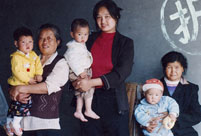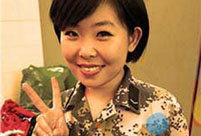 Bikini show in 2014 China Final of Miss Tourism World
Bikini show in 2014 China Final of Miss Tourism World
 Close-up view of August Aerobatic Team
Close-up view of August Aerobatic Team
 Goddesses married in 2014
Goddesses married in 2014
 Polar region photos raise worldwide awareness of global warming
Polar region photos raise worldwide awareness of global warming
 Get off at the last stop — Beijing Subway in vision
Get off at the last stop — Beijing Subway in vision
 Top 100 beauties in the world!
Top 100 beauties in the world!
 Gallery: Who is the most beautiful one?
Gallery: Who is the most beautiful one?
 If you like autumn, put your hands in the air!
If you like autumn, put your hands in the air!
 Fan Bingbing's "Queen style" in new play
Fan Bingbing's "Queen style" in new play
 Lingerie show at 2014 Miss China
Lingerie show at 2014 Miss China
Israeli and British researchers say they have used human cells successfully to create primordial germ cells that develop into egg and sperm for the first time.
The study, published in the US journal Cell on Wednesday, could provide an insight into fertility problems and early stages of embryonic development.
In the future, it could potentially enable the development of new kinds of reproductive technology.
Researchers have been attempting to create human primordial germ cells in the petri dish for years," said Jacob Hanna of the Weizmann Institute of Science in Israel, who led the study.
"PGCs arise within the early weeks of embryonic growth, as the embryonic stem cells in the fertilized egg begin to differentiate into the very basic cell types," Hanna said.
"Once these primordial cells become 'specified', they continue developing toward precursor sperm cells or ova pretty much on autopilot."
The idea of creating these cells took off with the invention in 2006 of induced pluripotent stem cells. These iPS cells are adult cells that are "reprogrammed" to look and act like embryonic stem cells, which can then differentiate into any cell type.
Several years ago, researchers in Japan successfully got mouse iPS cells to differentiate into PGCs, but efforts to replicate the achievement in human cells have failed.
The researchers found that the mouse embryonic cells are kept easily in their stem cell state in the laboratory, while human iPS cells have a strong drive to differentiate.
In the new study, Hanna's team created a method to tune down the genetic pathway for this differentiation, creating a new type of iPS cell that team members dubbed "naive cells."
These cells appeared to rejuvenate iPS cells a step further, closer to the original embryonic state from which they can truly differentiate into any cell type, Hanna said.
With a laboratory group under Azim Surani, a professor of physiology and reproduction at Cambridge University in Britain, the researchers found that by using this method they could convert up to 40 percent of the iPS cells into PGC cells.
Hanna said PGCs are only the first step in creating human sperm and ova, but he is confident that eventually it will be possible to use the findings to help enable women who have undergone chemotherapy or premature menopause to conceive.
The study has already yielded some interesting results, including a gene known as Sox17 that is critical for directing iPS cells to become primordial germ cells in humans, but not in mice.
 Tempting Yunnan cuisine
Tempting Yunnan cuisine Joint anti-piracy drill
Joint anti-piracy drill Time travel photos become a hit in military academies
Time travel photos become a hit in military academies Beautiful Chinese woman
Beautiful Chinese woman Chestnut girl goes viral online
Chestnut girl goes viral online Unknown 'monster' fish caught in Shandong
Unknown 'monster' fish caught in Shandong 20 years on: Relocated Three Gorges residents through lens
20 years on: Relocated Three Gorges residents through lens PLA HK Garrison veterans leave behind beautiful smiles
PLA HK Garrison veterans leave behind beautiful smiles Victoria's Secret Fashion Show
Victoria's Secret Fashion Show MOF cracks down on preferential taxes
MOF cracks down on preferential taxes Nepotism, over-staffing spoil local justice
Nepotism, over-staffing spoil local justice Urban intellectuals try to revive village life
Urban intellectuals try to revive village life US upswing won’t alter long-term trends
US upswing won’t alter long-term trendsDay|Week|Month